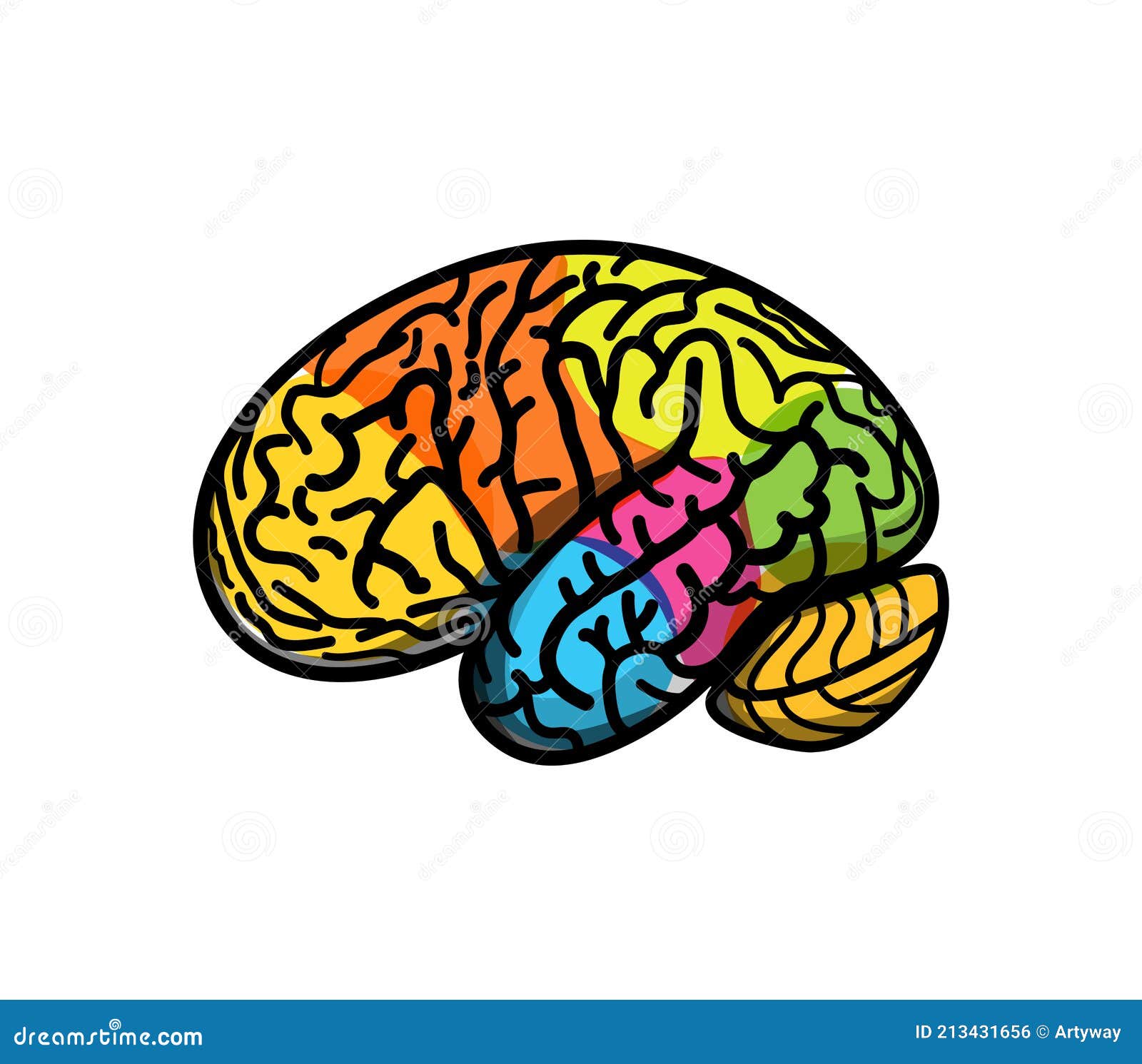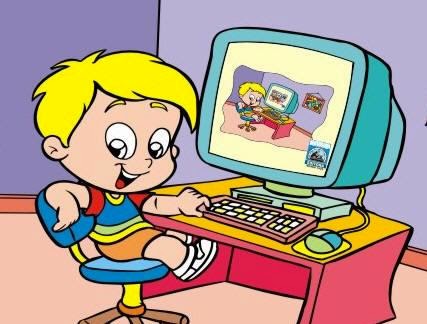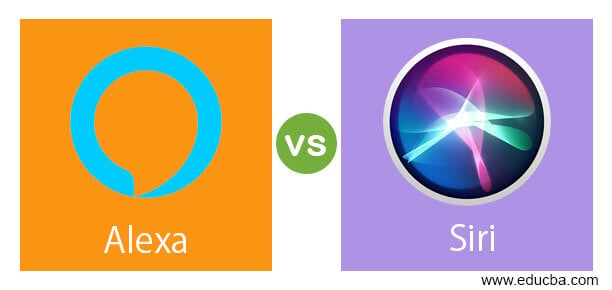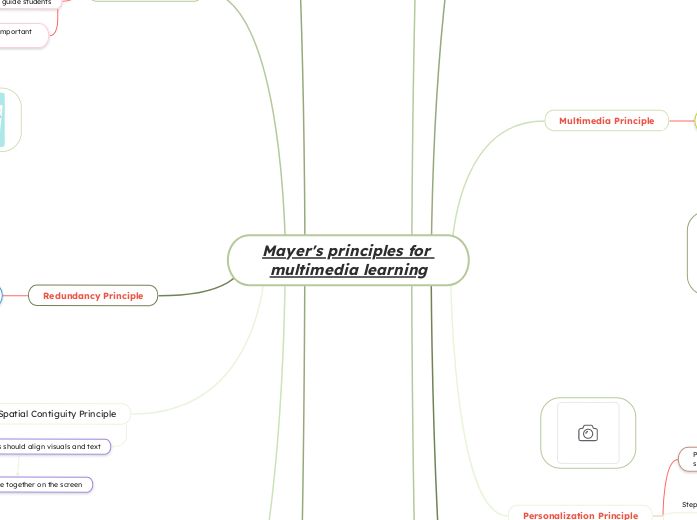Mayer's principles for multimedia learning
Pre-training Principle
Already know the basics
Multimedia learning
An introductory module to explain key concepts is nessesary.
Preparing terms and definitions to accompany the course.
for example
Physics Course
Introductory modules that cover basic concepts and terms
Pre-training is so important and facilitates de process.
Modality Principle
Students experience deeper learning from visuals and spoken words, is more attractive.
It's a balance, not to much information
Using animations or images
Narrated presentations with visuals.
Example
Geography Software
A dynamic software program combined with animated maps
Visual animations helping
students learn more.
Multimedia Principle
People learn best with a a combination of words and pictures in the same context.
Text or narration
Images, animations, and videos
Example
Environmental Science Course
Integrated interqactive simulations with images.
The material helps the different learning styles and reinforces this themes.
Personalization Principle
Personalised the multimedia material for the students.
Steps
Speaking in the first person (I, you, we, our)
Conversational tone
Use accessible language.
Adapt the language acord to the demographyc place.
Imagine you are in the room speaking with students.
Examples
Online Tutoring Platform
Using first-person language
Regular conversation
More personalized and informal approach
Voice Principle
People learn better when real presenters rather an not machines
Example
Virtual Chemistry Lab
Audio Material
Human-like voice and Generate-like voice
Using the natural human voice helps in maintaining student interest in the classes.
There is Siri and Alexa, but it is not the best.
Narrate the personal audio content.
Image Principle
High-quality, complementary visuals.
The image principle suggests people may not learn better from talking head videos.
Example
History Documentary
The narrator is not always
shown on screen.
Educators can create more effective and engaging learning.
Viewers to focus on historical images and
footage.
Using talking head videos.
Select relevant and meaningful images
that are related to what has been studied.
Coherence Principle
Only include graphics, text or narratives
Removing unnecessary information
Learners can
concentrate better
or
Understanding better scientific principles.
For example
Online Science Course
Includes multimedia lessons
Background music
Animations
Videos
Signaling Principle
Emphasise key points with arrows
Visual cues guide students
Attention to important
elements
Follow the steps more easily
For example
Interactive Math Tutorials
solving algebraic equations
using arrows and
different colors
Importan elements with visual cues guide.
Redundancy Principle
Using only spoken words
and images
Presenting the same information in multiple formats
Use either graphics or text to complement.
for example
Language Learning App
Uses spoken words paired with
images simultaneously.
Minimise the use of on-screen text in narrated
Spatial Contiguity Principle
L&D professionals should align visuals and text
Presented close together on the screen
How to apply?
Example
Biology E-Book
Keeping the text and diagrams close to each other helps
Connections between the visual and verbal information
Temporal Contiguity Principle
Simultaneous presentation
Process the information together and create connections
Voiceover plays along with the animation.
Present text and pictures on the same screen
Examples
Online History Lessons
A history lesson on World War II
Key events are synchronized with relevant video footage
Narration and video simultaneously
Segmenting Principle
Better learning with segmented information.
Breaking down information into smaller, manageable chunks
Not too much information
Personalized information management
Example
Chemistry Video Series
Chemical reactions that is broken down into
short.
Segmenting the content































